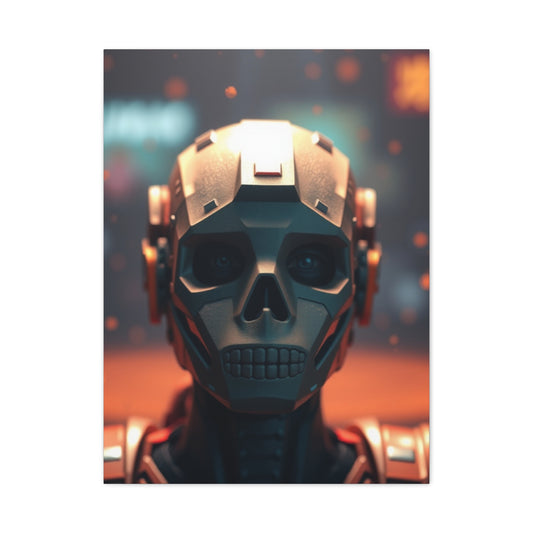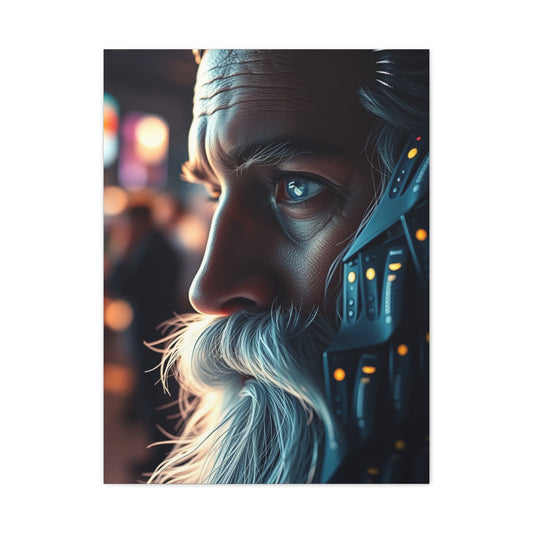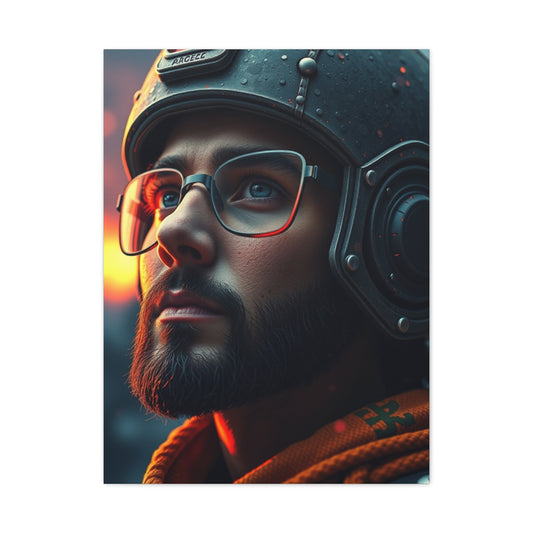Playful Pixel Wall Art for Every Room
Pixel wall art has emerged as a fascinating intersection between traditional craftsmanship and digital nostalgia. The simplicity of tiny squares forming elaborate imagery recalls the early days of video games and digital media, yet when translated into wood, paint, and texture, it takes on an entirely new identity. The journey of creating pixel wall art involves more than just arranging colored squares; it combines precision, imagination, and a patient dedication to craft. The appeal lies in its ability to bridge eras, transforming the language of pixels from computer screens into tangible artworks that exude warmth and authenticity.
When approaching a project of this kind, the initial decisions—such as pixel size, canvas proportions, and materials—dictate the outcome in both scale and atmosphere. Working with a 20x20 grid, for instance, creates four hundred distinct elements to be cut, sanded, stained, and positioned. This transformation of simple geometry into artistic expression highlights how even a rigid system of squares can yield fluid, lively imagery once placed within the context of wood and finish. The texture of grain, the subtle beveling of edges, and the thoughtful choice of stains elevate each pixel beyond mere utility, granting it individuality.
The experience of crafting such artwork is not only physical but also conceptual. Each decision, from the first sketch on a digital canvas to the final varnish stroke on wood, carries significance. As the process unfolds, what begins as a homage to digital pixels becomes an embodiment of patience, skill, and interpretation of history.
Historical Background
The roots of pixel art are firmly embedded in the technological limitations of early computing and gaming. During the late twentieth century, display resolutions were primitive by today’s standards, often restricted to grids no larger than a few dozen squares in each direction. Artists and programmers, constrained by these limitations, found ingenious ways to express complexity and character using simple blocks of color. Characters from classic arcade games, iconic symbols from consoles of the 1980s, and the playful imagery of handheld devices all relied on 8-bit or 16-bit design principles.
This aesthetic, born out of necessity, has since evolved into a recognized art form. Pixel art is celebrated for its clarity, charm, and nostalgia, embodying a minimalist philosophy that resonates with both gamers and artists. Translating this visual language into physical wall art allows these once fleeting digital images to acquire permanence. Where once they flickered on cathode-ray screens, they now occupy walls as carefully handcrafted pieces.
Wood, as a medium, brings a profound contrast to the digital origins of pixels. Instead of backlit screens, viewers encounter stained grains, beveled textures, and the warmth of handmade artistry. This juxtaposition between modern nostalgia and ancient material forms the core of why pixel wall art resonates so deeply. The tradition of mosaic-making from classical civilizations also finds echoes here. Just as Roman artisans arranged tesserae of colored stone to depict gods and myths, today’s creators align small wooden squares to depict mushrooms, flowers, or stars from gaming history. In this way, pixel wall art stands as both a continuation of ancient decorative practices and a reinvention shaped by twentieth-century digital culture.
Core Concepts and Foundations
At the heart of creating pixel wall art lies a fundamental set of principles. First is the grid, the backbone of all pixel designs. Deciding on the size of the grid, whether 16x16 or 20x20, determines the complexity of the artwork. A grid too small limits expression, while one too large demands an immense amount of labor.
Second is the scale of each pixel. In practice, this translates into measured wooden squares. A canvas of 600mm, once framed, may demand pixels of around 25mm each to balance visibility with manageability. Within each pixel, the texture of wood and the stain color collaborate to define tone, shadow, and vibrancy. Unlike digital pixels that offer uniformity, wooden pixels are inherently unique. Grain lines, knots, and slight variances contribute to a natural diversity that enriches the overall piece.
Another crucial foundation is the preparation of materials. Selecting plywood with a smooth, clean face reduces imperfections, while ensuring it remains flat avoids warping over time. Cutting wood into strips, sanding edges, applying washes of paint or stain, and finally shaping them into squares creates an extensive process of transformation. A single design may require hundreds of individually finished squares, each carefully considered before being placed onto the final canvas.
The technique of beveling, while optional, adds remarkable depth. By softening the edges of each square at an angle, light interacts differently across the artwork, producing shadows and highlights that mimic the shading techniques of traditional illustration. This effort, though painstaking, elevates the piece from flat imagery into a tactile mosaic that demands closer inspection.
Finally, arrangement and adhesion form the practical culmination of the work. Using grids drawn onto a canvas board, each square is placed with precision. Adhesives hold them in place, borders frame them with dignity, and varnish provides both protection and sheen. The piece thus evolves from a digital sketch into a wooden reality that balances order and artistry.
Types and Categories
Pixel wall art can be approached in a variety of ways, each offering unique stylistic and functional interpretations. The first category draws directly from gaming heritage, replicating beloved characters, power-ups, and environments in faithful 8-bit or 16-bit detail. These works rely heavily on the nostalgia of viewers, sparking recognition and emotional connection.
Another type emphasizes abstraction. Instead of recognizable figures, artists use grids of color to generate patterns, gradients, or symbolic imagery. In these cases, the wooden squares act as pigments in a painter’s palette, yet arranged within a rigid geometry that keeps the composition orderly. Such pieces may decorate modern interiors with subtlety, where color harmony takes precedence over recognizable shapes.
A further category focuses on blending digital nostalgia with natural themes. For instance, floral motifs, landscapes, or animals rendered in pixel form present a playful fusion between nature and digital minimalism. By using wood stains in earthy hues, these designs honor organic inspiration while retaining the structured clarity of pixels.
Additionally, there are experimental categories where artists incorporate textures, layered surfaces, or mixed materials. Some combine metal, resin, or fabric alongside wooden squares to create multi-sensory pieces. Others utilize oversized pixels to make bold statements that emphasize form over detail. This diversity reveals how pixel wall art extends far beyond imitations of game sprites, becoming a flexible medium for wide artistic exploration.
Practical Applications
The applications of pixel wall art extend into both personal and professional contexts. Within domestic spaces, such artwork transforms plain walls into dynamic focal points. In living rooms, they serve as conversation starters, merging craftsmanship with nostalgic charm. In bedrooms or recreational spaces, pixel art motifs connect individuals with their favorite games, stories, or cultural touchstones.
Beyond private homes, businesses also find value in this style. Creative offices often employ pixel wall art to spark inspiration and inject playfulness into their environment. Cafés and bars with retro or gaming themes utilize such pieces to enhance atmosphere, inviting patrons to immerse themselves in familiar yet reimagined aesthetics. Galleries may feature them as contemporary mosaic art, celebrating the collision of old craftsmanship and modern symbolism.
Practical applications also extend to pedagogy and community. Workshops teaching pixel wall art provide opportunities for participants to learn woodworking skills, patience, and design thinking. Children and adults alike benefit from the tactile experience of turning pixels from screen to wood. It bridges the generational gap, appealing to those who grew up with early digital culture and those discovering it anew.
Moreover, artists and craftspeople can commercialize their creations through online platforms, reaching audiences eager for unique handmade décor. The small scale of each square also makes customization possible. Commissioned works may feature initials, logos, or bespoke imagery, ensuring personal resonance for clients. Through such applications, pixel wall art proves not just a decorative curiosity, but a versatile form of expression that enriches everyday spaces with history, craft, and creativity.
Techniques and Methods
The creation of pixel wall art relies on a range of techniques that merge woodworking, design planning, and finishing skills. While the process begins with a digital sketch on a grid, the translation into tangible form requires deliberate choices at every stage. A foundational method is the preparation of the wooden surface. Selecting plywood with an even grain reduces imperfections and makes the staining process smoother. Some artisans also prefer hardwoods such as maple or oak for their durability and natural aesthetic, though they are more demanding to cut. The choice of wood sets the tone, influencing both the look and longevity of the finished work.
Once the material is chosen, cutting becomes the next crucial step. Strips are sliced to precise widths, usually in line with the planned pixel size. Precision is vital, as even a fraction of a millimeter’s discrepancy can accumulate across hundreds of squares, resulting in a design that drifts out of alignment. The use of sleds and guides during sawing minimizes error while also protecting the maker from accidents. The rhythm of cutting, sanding, and stacking becomes almost meditative, yet each piece carries responsibility for the integrity of the whole composition.
Staining and coloring introduce individuality to each pixel. Traditional methods involve wood stains in earthy browns and blacks, but experimentation with diluted paints produces subtle washes that highlight the grain rather than conceal it. Artists often create palettes tailored to their design, ensuring that enough squares are available in each shade before beginning assembly. By layering stains or applying washes unevenly, makers can create pixels that feel organic rather than mechanical, echoing the imperfections of traditional mosaic tiles.
Another method that elevates the visual impact is beveling. Cutting a small angle along the edges of each square transforms the way light interacts with the artwork. Shadows pool in the beveled gaps, creating contrast and depth. Though labor-intensive, this detail can change a flat design into something sculptural. For makers seeking to push further, advanced finishing techniques such as applying waxes, oils, or polyurethane varnishes can enhance durability while emphasizing texture.
Assembly requires patience and discipline. Makers often sketch faint grid lines on the backing board, then begin gluing from one corner to ensure alignment. Small adjustments during placement prevent drift, while clamps and weights help hold squares in place as the adhesive sets. Frames complete the structure, often beveled or painted to complement the internal design. Finally, varnish unifies the piece, protecting the surface while enriching colors. Taken together, these techniques transform humble squares of wood into a coherent and striking piece of pixel wall art.
Challenges and Common Mistakes
Despite the charm of the finished product, crafting pixel wall art presents a range of challenges. The first is precision. Small inaccuracies in cutting can quickly multiply, resulting in gaps, overlaps, or misaligned rows. A strip cut at 30 millimeters instead of 25, for example, introduces unnecessary rework and waste. Consistency at the earliest stages saves significant effort later, underscoring the importance of planning and careful measurement.
Another challenge lies in color management. Many beginners stain or paint strips without considering the quantity required for each shade. This often leads to shortages, forcing improvisation that alters the design’s coherence. Planning pixel counts before coloring ensures balance and prevents the frustration of running out of a critical hue halfway through. Equally problematic is over-saturating the wood, which can obscure the grain and diminish the natural texture that gives the artwork its unique character.
Beveling presents its own difficulties. While it adds dimension, the sheer volume of edges can overwhelm even experienced makers. Thousands of repetitive cuts demand patience, ear protection, and strict attention to safety. Attempting to rush this stage often results in uneven edges, tear-outs, or even injury. Those who choose to forgo beveling must accept a flatter aesthetic, but this compromise may be worthwhile depending on available time and resources.
The assembly stage also harbors pitfalls. Overly tight placement of squares can cause warping or misalignment, as the wood naturally expands and contracts with humidity. Leaving slight gaps not only accommodates this movement but also allows the design to breathe. Glue application, if excessive, may seep between squares and harden into unsightly ridges. Using just enough adhesive to secure the pixel avoids such blemishes.
Framing introduces another potential source of error. Poorly cut miters or mismatched bevels can undermine the professional appearance of the piece. Patience in measuring and cutting frame components ensures clean joins that elevate the artwork. Finally, finishing with paint or varnish requires a steady hand, especially when working around the tiny bevels between squares. Rushing through this stage often results in streaks or uneven coverage. Each mistake offers a lesson, teaching the maker that patience and precision are as essential as creativity in pixel wall art.
Trends and Future Outlook
Pixel wall art, though rooted in nostalgia, continues to evolve as new cultural and artistic influences shape its direction. A current trend emphasizes minimalism. Rather than elaborate sprites, many artists are experimenting with large pixels in muted palettes, creating abstract gradients that align with contemporary interior design. These pieces complement minimalist homes, offering subtle rhythm without overwhelming the space.
Another trend integrates sustainable practices. With growing awareness of environmental impact, makers are increasingly turning to reclaimed wood, eco-friendly stains, and natural finishes. This shift not only reduces waste but also introduces character to the artwork, as each piece of reclaimed timber carries its own history. The marriage of digital inspiration with sustainable material underscores a broader movement toward ethical craftsmanship.
Technology is also influencing the future of pixel wall art. Digital planning tools allow artists to simulate designs in three dimensions, experimenting with depth and color combinations before cutting a single piece of wood. Some creators are exploring laser cutting and CNC milling to streamline precision, reducing manual error while opening possibilities for more complex patterns. Augmented reality applications may soon allow clients to preview how a piece will look on their wall before commissioning it, enhancing personalization.
Collaborative and interactive works are gaining traction as well. In community art projects, each participant contributes a pixel, building collective designs that embody shared experiences. Interactive installations, where magnetic or movable squares allow viewers to rearrange the design, transform static art into a dynamic experience. These innovations push the boundaries of pixel wall art, ensuring it remains relevant in a digital age while embracing tangible, communal expression.
Looking ahead, the outlook for this art form is promising. Its unique blend of digital nostalgia and handcrafted authenticity ensures continued appeal. As more people seek décor that balances modernity with tradition, pixel wall art stands poised to occupy a central place in both domestic and public spaces. The combination of craft, sustainability, and personalization suggests a future where each piece tells a story, not only of digital origins but also of human ingenuity and care.
Expert Insights
Artisans who have devoted themselves to pixel wall art often speak of the process as both rewarding and demanding. Many emphasize the importance of planning, noting that a well-prepared design reduces wasted effort later. They recommend counting pixels by color before staining, ensuring that each shade is adequately represented. Others advise investing in quality tools, as accurate cuts and smooth finishes depend heavily on reliable equipment.
Experts also highlight the meditative quality of the work. The repetitive rhythm of cutting, sanding, and gluing hundreds of squares cultivates patience and focus. While the labor may seem daunting, the gradual emergence of an image from individual components creates a sense of fulfillment unlike any other. Makers describe the moment when the final varnish dries and the piece gleams under light as profoundly satisfying, marking the culmination of hours of meticulous effort.
Experienced artists encourage experimentation. While traditional gaming sprites hold enduring appeal, exploring abstract compositions, natural motifs, or even personalized commissions can broaden creative horizons. Many note that clients often seek unique designs tailored to their homes or interests, making flexibility and imagination as vital as technical skill.
On the subject of mistakes, experts advise embracing them as part of the journey. Misaligned rows, uneven stains, or imperfect bevels may initially feel disappointing, but they also add character. Unlike digital pixels that are perfectly uniform, wooden pixels carry individuality. Minor imperfections can enhance authenticity, reminding viewers that the piece is handcrafted rather than machine-produced.
Ultimately, experts stress that the heart of pixel wall art lies in its ability to bridge eras. By bringing digital aesthetics into tangible form, makers honor both the history of technology and the timeless tradition of craft. This fusion ensures that pixel wall art will not fade as a trend but will instead continue to evolve, inspiring future generations of artists and audiences alike.
Emerging Trends in Wall Art
As with many creative movements, pixel wall art has begun to shift with the tides of culture, taste, and technology. What once thrived on nostalgia and playful homage to digital sprites has grown into a multi-faceted artistic current. One of the most visible emerging trends is the transition from figurative to abstract. While the earliest works often recreated characters from video games, many artists now lean toward geometric patterns, atmospheric gradients, and minimalist landscapes. This shift allows pixel wall art to adapt to modern interiors where subtlety and elegance are prized over obvious references.
Color palettes are also evolving. Instead of the sharp primaries that echo the cathode-ray glow of early gaming, many contemporary pieces embrace muted tones, pastels, or even monochromatic designs. These softer palettes allow the work to harmonize with Scandinavian, Japandi, or contemporary rustic interiors. Variations in wood texture and stain deepen the visual range, moving the artwork beyond mere color representation into the realm of tactile experience.
Another trend gaining prominence is scale. While pixel wall art traditionally occupies a manageable size, new creations span entire walls or large installations. The magnified proportions turn individual pixels into bold design statements, making them visible from across expansive rooms or public venues. Conversely, miniature versions have also emerged, with tiny pixel blocks crafted from rare woods or even ceramic, designed as accent pieces or collectibles.
Interactivity is another captivating development. Some designers have begun producing modular works where pieces can be rearranged by the viewer, allowing the composition to evolve over time. This introduces a dynamic element that transforms the audience into participants. By blending artistry with playfulness, these pieces echo the interactivity of digital origins while grounding them in the physical world.
Finally, there is a growing tendency to merge traditional craftsmanship with modern technology. Artists are experimenting with laser cutters for precise shaping, yet still staining, sanding, and assembling by hand to retain the authenticity of the process. This hybrid approach demonstrates that pixel wall art is not stagnant but alive with experimentation, responding to both cultural memory and present-day aesthetics.
Step-by-Step Guides
For those inspired to create pixel wall art themselves, a methodical approach can turn ambition into tangible achievement. The journey begins with the design phase. Using graph paper or digital software, artists map out their composition. Each square represents a pixel and must be carefully considered for color and placement. Beginners often start with simple motifs such as hearts, stars, or basic geometric shapes before progressing to more elaborate scenes or portraits.
After a design is chosen, material selection follows. Wood remains the most common medium, though reclaimed planks, bamboo, or even composite materials may be used. The wood should be smooth and free from major imperfections, as knots or cracks can disrupt alignment. Artists then cut strips of wood into consistent widths, later dividing them into squares. Consistency in this step is paramount, as irregular dimensions will compromise the structure of the final piece.
Sanding is the next essential step, ensuring that each square has clean edges and a refined surface. This not only improves aesthetics but also prevents splinters and ensures adhesion during assembly. Coloring or staining is then applied, with each pixel sorted into groups according to its shade. Many artisans create sample swatches to confirm their palette before committing to large batches.
Assembly begins with preparing a sturdy backing board. Grid lines are lightly drawn to guide placement. Artists usually start at a corner, working row by row to prevent drift. Adhesive is carefully applied to each square, avoiding excess that might seep through the gaps. Small clamps or weights hold the squares in place while drying. The process can be lengthy, particularly for larger designs, but the rhythm of alignment and placement is integral to the craft.
Once the design is complete, the piece requires framing. A well-fitted frame not only protects the edges but also enhances the visual coherence of the artwork. The frame may be simple and minimalist or elaborately carved depending on the desired effect. Finally, finishing touches such as varnish or protective coatings are added. These not only deepen the colors but also protect the surface from dust, moisture, and wear. With patience and care, the completed piece reflects not just the design but the hours of dedication woven into its making.
Sustainability and Ethical Considerations
The growing awareness of ecological responsibility has begun to influence the creation of pixel wall art. While the aesthetic roots of the craft are digital, its physical form draws heavily on natural resources, making sustainability an important consideration. One of the most significant approaches is the use of reclaimed wood. Old furniture, dismantled barns, and discarded planks provide raw materials that carry a story within their fibers. By repurposing such materials, artists reduce waste while imbuing their work with history.
Another ethical consideration lies in sourcing finishes and stains. Many traditional wood treatments rely on chemicals that are harmful to both the environment and the artisan. A shift toward water-based stains, natural oils, and beeswax alternatives is increasingly evident. These eco-conscious finishes not only minimize ecological impact but often bring out subtler, more natural hues in the wood, enhancing the authenticity of the piece.
Scale also matters when considering sustainability. Large works that require significant resources may be balanced by smaller, modular pieces that use less material while still creating visual impact. By encouraging modularity, artists can also promote longevity, as parts of a work can be replaced or rearranged without discarding the whole. This flexibility aligns with sustainable design principles that emphasize adaptability and durability.
Ethical production also extends to labor practices. Many artisans highlight transparency in their process, ensuring that works are handcrafted in fair conditions rather than outsourced to exploitative labor markets. As buyers become more discerning, provenance and authenticity have become as important as visual appeal. Supporting independent makers or cooperatives strengthens local economies while preserving traditional craft skills.
Finally, sustainability intersects with creativity. By integrating found objects, natural pigments, and low-impact materials, artists are discovering fresh aesthetic possibilities. A pixel formed from weathered timber tells a different story than one crafted from pristine maple, yet both hold value. These choices remind us that art is not only about beauty but also about responsibility, bridging the gap between personal expression and collective care for the environment.
Global Influences in Wall Art
The appeal of pixel wall art is not confined to one culture or geography; rather, it reflects and absorbs global influences that enrich its vocabulary. In Japan, the minimalist tradition of wabi-sabi resonates with the imperfections of hand-cut pixels, aligning with values that celebrate transience and asymmetry. Japanese artisans may incorporate subtle ink washes or charred wood techniques such as shou sugi ban, adding depth and resilience to their creations.
In Scandinavia, the influence of Nordic design emphasizes clean lines, muted palettes, and natural materials. Here, pixel wall art often appears in soft greys, whites, and earthy browns, blending seamlessly into minimalist homes that prize tranquility and light. By contrast, Latin American makers infuse vibrancy, drawing from indigenous patterns and bold hues that echo textiles, mosaics, and mural traditions.
African traditions have also left their mark. The pixelated grid shares an affinity with beadwork and woven textiles, where repeated units build into intricate patterns. Artists inspired by these traditions often use bright, contrasting colors and geometric forms, creating pixel wall art that feels simultaneously modern and rooted in cultural legacy.
In the Middle East, tessellation and geometric ornamentation inspire pixel compositions that echo centuries-old architectural motifs. Wooden squares stained in jewel tones can form designs reminiscent of tiled courtyards or intricate latticework. Such adaptations reveal how pixel wall art bridges contemporary aesthetics with ancient traditions of pattern-making.
Globalization has also enabled cross-pollination. Artists share techniques and designs online, adapting ideas from distant cultures into their own practice. A maker in Europe may experiment with vibrant Caribbean color palettes, while an artisan in Asia may adopt Nordic restraint. This dialogue enriches the art form, ensuring it remains fluid and dynamic.
Ultimately, the global influences in wall art remind us that pixel-based compositions are not confined by digital nostalgia alone. They are part of a universal language of grids, patterns, and repetition, echoing traditions across continents. Each interpretation, whether minimal, ornate, or experimental, contributes to the evolving narrative of pixel wall art as a truly international phenomenon.
Techniques of Personalization in Wall Art
One of the most compelling aspects of pixel wall art lies in its potential for personalization. Unlike conventional paintings where the brushstroke belongs solely to the artist, this form invites interpretation and modification. Individuals can adapt designs to reflect personal stories, family emblems, or symbols of identity. By adjusting hues, experimenting with textures, or rearranging modular elements, the art transforms from a static object into a living reflection of its owner.
The method of personalization begins with color theory. Each shade carries psychological undertones, and by curating palettes, the maker infuses the work with emotion. A muted gradient of greys and blues may evoke serenity, while a fiery mosaic of reds and oranges radiates vitality. Families often commission designs that carry significance such as birthstones, national flags, or favorite landscapes rendered in pixel form. These designs transcend decoration, becoming narratives etched in wood.
Texture is another avenue of personalization. Smooth, polished squares speak of refinement, while rough, unvarnished segments suggest raw authenticity. Some artisans combine multiple materials—wood, stone, glass, or metal—to enrich the tactile spectrum. Such diversity creates compositions that are not only seen but also felt, adding a sensory dimension to pixel wall art.
Beyond surface qualities, scale contributes to individual expression. A large-scale mural stretching across a living room may symbolize ambition and openness, while a small framed design above a desk can reflect quiet introspection. The ability to calibrate size to space means that this art form is endlessly adaptable, capable of shaping itself to diverse environments and personalities.
Personalization also connects with memory. A traveler may translate photographs of beloved cities into pixel grids, capturing skylines or landmarks in minimalist form. Couples might craft designs that immortalize shared experiences, from constellations observed together to favorite floral motifs. In this way, pixel wall art ceases to be just aesthetic—it becomes a vessel of remembrance and identity, personalized in every pixel.
Challenges in Craftsmanship and Adaptation
While the creation of pixel wall art offers freedom, it is not without challenges. The very nature of working with small units requires meticulous attention to detail. A single misaligned square can disrupt the symmetry of the composition, drawing the eye toward imperfection. Patience and precision become indispensable virtues, as artisans must measure, cut, sand, and align hundreds of pieces with unwavering care.
One of the most common difficulties lies in consistency. Wood is an organic material, prone to warping, uneven grain, or subtle variations in shade. Achieving uniformity across hundreds of blocks can test even the most skilled craftsman. Moreover, humidity and climate changes can affect the material over time, causing expansion or contraction that shifts the alignment. These challenges demand foresight, careful preparation, and often innovative solutions such as engineered backings or climate-controlled storage.
Color stability poses another hurdle. Natural dyes and stains may fade under prolonged exposure to light, altering the intended balance of the piece. To address this, many artisans employ protective finishes or strategically position works away from direct sunlight. Yet even with precautions, time imprints its presence on the art, subtly altering tones. This impermanence can be viewed as a flaw or embraced as part of the narrative, echoing traditions where age itself is considered beautiful.
Adaptation to varied spaces also presents challenges. A design that dazzles in a gallery may overwhelm a modest home. Conversely, a piece intended for a small corner might appear insignificant in a vast hall. To overcome this, artisans often create modular systems that can be expanded or reduced, allowing the work to breathe in different contexts.
Another challenge arises in balancing tradition with innovation. While some viewers celebrate digital nostalgia, others seek refinement and contemporary appeal. The artist must navigate this dual expectation, creating pieces that honor the past while aligning with present tastes. Striking this balance is not easy, yet it is precisely this tension that propels pixel wall art into new creative territory.
The Future Outlook of Pixel-Inspired Design
Looking ahead, the future of pixel wall art seems expansive, shaped by both technological advances and shifting cultural desires. As digital and physical realms continue to merge, new opportunities emerge for hybrid forms that blend craftsmanship with innovation. One promising direction is the integration of light. LED pixels embedded within wooden grids can create pieces that change according to mood, season, or even music. These luminous mosaics retain the tactile warmth of natural material while introducing a kinetic element.
Another frontier is sustainable technology. With growing awareness of ecological balance, future designs may prioritize biodegradable materials, plant-based resins, or modular structures that can be reassembled into new patterns rather than discarded. In this vision, wall art becomes not only an aesthetic pursuit but also a model for responsible living.
Virtual reality and augmented reality may also play a role. Already, software enables designers to visualize their pixel creations in simulated environments, helping clients envision how a piece might transform a space before it is built. Augmented overlays could even allow shifting colors or animated patterns projected onto static art, creating a bridge between tradition and futurism.
Cultural shifts also influence future directions. As global connectivity deepens, artistic exchange across continents will enrich the lexicon of pixel wall art. The minimalist sensibilities of Scandinavian homes may intertwine with the vibrant geometries of African textiles or the meditative symmetry of Islamic patterns. This cultural synthesis ensures that the art will never be confined to a single narrative but will instead continue to evolve as a global dialogue.
Importantly, the future will likely witness increased recognition of pixel wall art within mainstream artistic institutions. Galleries and museums have begun to showcase these works, acknowledging them as more than novelty. With curators and critics exploring its intersections with digital history, craftsmanship, and cultural identity, the art form may step into a broader spotlight, solidifying its place as a serious artistic genre.
Expert Perspectives on Artistic Evolution
Those who dedicate themselves to pixel wall art often reflect deeply on its meaning and trajectory. Artisans describe the process as meditative, a rhythmic act of repetition that quiets the mind. The steady placement of square upon square demands patience, transforming creation into a ritual. This slow pace contrasts starkly with the rapidity of the digital world it references, providing a paradox that fascinates practitioners.
Experts in interior design view the art form as versatile. Its grid-based compositions lend themselves to both modernist and eclectic interiors. Designers often recommend it as a focal point that can anchor a room while simultaneously complementing existing décor. The modularity and adaptability of pixel wall art mean it can suit both grand living rooms and intimate studies.
Historians and cultural critics also provide insights. They trace its lineage from ancient mosaics and textiles to the digital age, noting that the pixel is not merely a technological invention but part of humanity’s longstanding fascination with the grid. In their view, pixel wall art is the continuation of an ancient narrative—patterns expressed in clay tiles, woven fabrics, or stone tessellations now reborn in wood and pigment.
Psychologists, too, find meaning in the form. The ordered repetition of pixels can evoke calm, while the interplay of colors stimulates imagination. Viewers may find comfort in the balance between structure and creativity. Experts suggest that such art offers therapeutic value, providing a visual anchor in spaces where individuals seek clarity and peace.
Collectively, these expert perspectives underline the depth of the art form. Far from being a fleeting trend, pixel wall art occupies a meaningful intersection of history, design, psychology, and culture. Its evolution is not random but shaped by a chorus of voices reflecting on its purpose and potential.
Conclusion
In tracing the journey of pixel wall art, one encounters a dialogue between past and present, digital and material, individuality and universality. What began as playful homage to early video game aesthetics has matured into an art form with complexity, versatility, and profound cultural resonance. Emerging trends reveal experimentation with color, scale, and interactivity, while step-by-step guides show the devotion and precision required to bring visions to life. Sustainability and ethical choices demonstrate that art today must be as responsible as it is beautiful, reminding us that creativity is inseparable from care for the world around us.
Global influences highlight the universal appeal of grids and repetition, echoing traditions across continents while pointing toward shared humanity. Personalization ensures that each piece becomes not only a design but a story, imbued with the memories and identities of those who create or commission it. The challenges faced by artisans underscore the dedication required, yet these very obstacles sharpen skill and inspire innovation. The future promises luminous hybrids, sustainable practices, and cultural cross-pollination that will expand the art’s horizon.
At its core, pixel wall art embodies paradox. It is digital yet tactile, structured yet expressive, nostalgic yet forward-looking. Each square carries the weight of craft, patience, and imagination. As the art form continues to evolve, it reminds us of the beauty found in repetition, the richness of materiality, and the enduring power of the human impulse to create patterns that reflect both self and society. In its simplicity lies depth, and in its structure lies boundless possibility.

















